The Sites of the 12 Jyotirlinga in Astrology. Astrologeography & Sacred Sites: on the astrogeographical positions of the 12 ancient Jyotirlinga
For Astrogeographical positions of Kumbha Mela Sites Haridwar, Prayag, Nashik, Ujjain see bottom of this page
Read an introduction to the 12 Jyiotirlinga on the sacredsites page.
Related articles: The Shakti Peetha shrines in astrogeography, Mount Kailash in Cancer (fertility rivers) with Capricorn (mountains, effective factual reality), The Hindu Gods Vishnu and Narayana in astrogeography, Shiva in two water signs, Pashupatinath Temple in Kathmandu, Gemini and Aries – A Statue of Hanuman, The Rock Fortress of Sigiriya, The source of the river Ganges in Cancer-Scorpio, A Kali Temple in Libra the Sign of the Angels, Meenakshi Aman Temple in astrogeography, The astrogeographical position of New Delhi. Shirdi Sai Baba, A Statue of Hanuman, The Rock Fortress of Sigiriya, Sri Gomateshvara – A Bath of Milk and Honey, The Golden Temple, The Temple of Buddha`s Illumination.
The Sites of the 12 Jyotirlinga in Astrology
The 12 Jyotirlinga shrines are important places of pilgrimage, mythology. worship, prayer, meditation and re-connection with the divine dedicated to the Hindu god Shiva. Among other functions they mark important punctuations of the landscape and overall national morphic field of India in various parts the country.
The 12 Jyotirlinga and their shrines have been kept alive and their energies recharged through rituals, worship, prayer and attention by the local priests, wandering monks, pilgrims and local people over long periods of time. It has to be understood that the ritual worship performed at these and other Hindu temples includes the gathering of the spirits of the elements of mother earth, fire, water, air, sky, subtle and spiritual plane thus stimulating the flow of energies related to them through the landscapes of India.
According to the Shivapurana the gospel book of the worship of Shiva the Jyotirlinga shrines are supposed to represent 12 different aspects of a column of light once manifested by Shiva during a controversy about the supremacy of creation between the three major Hindu deities Brahma, Vishnu, and Shiva. It is assumed that Shiva “pierced the 3 worlds with an infinite column of light”. The other 2 gods decided to search for the source of the column travelling over billions of years without finding its origin. That was the proof of the supremacy of Shiva.
The twelve Jyotirlinga shrines are temples all across the Indian peninsula where Shiva is assumed to have manifested as a fiery column of light symbolizing the infinite nature of his potentials.
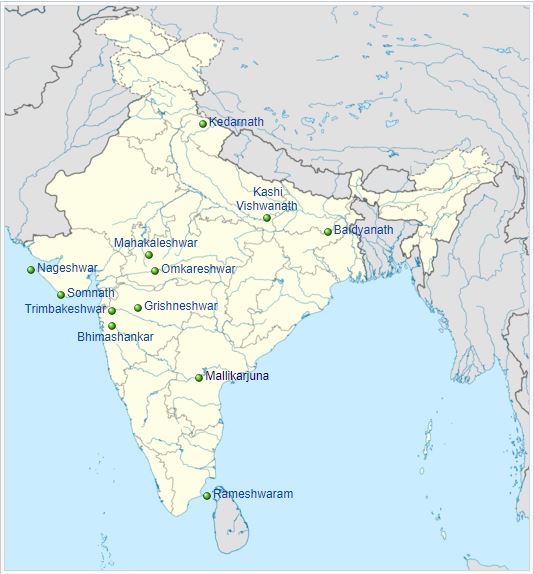
I have been fascinated by the idea of analyzing the astrogeographical positions of the 12 Jyotirlinga for a long time. Personally I visited only three of them but have often listened to the ever-changing variations of oral traditions on the way along paths of pilgrimage in India.
The astrogeographical positions for morphogenetic field level 4: The Atmosphere and Energetical Stimulation of the Temple Sites and their Qualities
Whether the results of the astrogeographical calculations from my astrological worldmap system came as a big surprise to me I cannot say. But there is definitely a really strong tendency which could help us understand the worship of Shiva and his place in Hindu religion, society, his role among the gods and/or demigods and find out more about the impact of such sacred sites and places of worship, prayer, healing, power, spiritual contact and energetical stimulation.


The role of water sign Cancer as the most frequent position of a Jyotirlinga Shrine
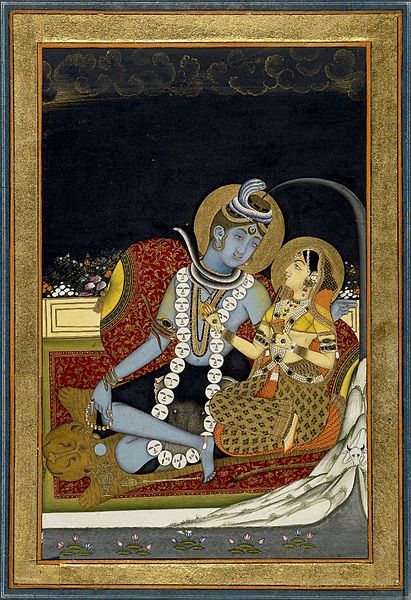
It is really fascinating to see that the role of water sign Cancer as the most important indicator for Shiva is clearly reflected in the statistical analysis as the most frequent astrogeographical position of the 12 Jyotirlinga (and of the 18 Maha Shakti Peetha Shrines as well). Lingams as representations of the male form are thus placed at sites of a female energy, springs or wells of water, underground rivers and sites in resonance with the stimulation of aspects of deeper emotions, fertility, emotional individuality and rge connectedness with ancestor lines too.
This also means that these columns of light are not focused on aspects of outwardly, physical or mental strength, domination or power in the first place as is sometimes assumed but rather on emotional authenticity. life itself, fertility and the nourishment of the living beings.
Through Cancer`s role as the sign of fertility, conception, motherhood, the sexual organs though not of evil and the rectum (Scorpio) of course, the uterus, vagina, eggs, the interior, emotional individuality and independence and the Moon the stimulation from places in Cancer does not affect humans alone but all living beings including animals and plants as well and in the same way!!!
Cancer appears to be the most important astrological resonance aspect for sites of Indian unity and important temples related to Shiva and the female deities. Important examples include:
- the Baghirati source and Devpryag Sangam of River Ganga as well es the City of Varanasi in the combination of Cancer with Scorpio.
- the birth place of Mahavatar Babaji, the ancient Kamakhya Mother goddess shrine at Guwahati, the tallest Shiva statue worldwide, the office of the Indian Prime Minister and the Lok Sabha building are all located in Cancer with Scorpio too.
- the site of the Statue of Indian Unity depicting the Vallabhbhai Patel has both astrogeographical resonance coordinates in Cancer
- together with the third water sign Pisces the sign of Cancer is also the most frequent astrological sign at the sites of the 18 Maha Shakti Peethas
Important temples dedicated to Vishnu, especially older ones may be found to represent a certain polarity to the Cancer quality of sites of Shiva and Devi worship. Such type of astrogeographical polarity should be examined as positive.
Kedarnath

There are 2 of the 12 Jyotirlinga shrines that have both coordinates in water sign Cancer. One is the Kedarnath Temple located at 3553 m altitude on the foot of Mount Kedarnath (6940 m) and 223 km north east of Rishikesh in the Mountain State of Uttarkhand.
The five Pandava brothers (see: Mahabharata) are assumed to have founded the first temple at Kedarnath. After the Battle of Kurukshetra they performed penance and meditation here praying to Lord Shiva in order to seek forgiveness for their sins. But Shiva did only appear in the form of a bull before them, hiding his true face. Bhima, one of the brothers managed to get hold of the tail of the buffalo, Finally Shiva manifested as a column of light at the place of the ancient Kedarnath shrine adjacent to the current site promising help for all those seeking help at this place.
Omkareshwar
The second Jyotirlinga Shrine with both coordinates in Cancer is in the Omkareshwar Mahadev Temple on a small island in the sacred Narmada River in the State of Madhya Pradesh. The island is called Mandhata or Omkareshwar because it is said to have the shape of the Devnagari Letter for the word OM – ॐ.
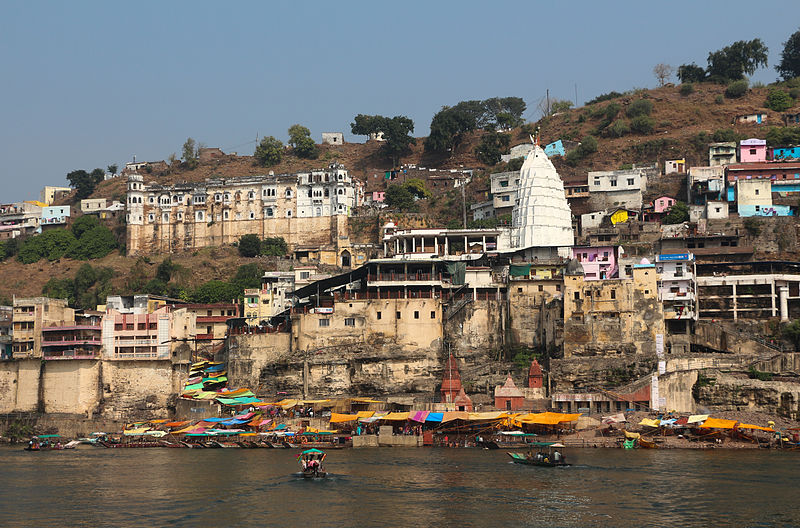
The astrogeographical position in Cancer relates the energetical topic of the site to a central place of resonance of both the nearby river bed and the topic of an island in the river. This is because Cancer is the sign of river banks as the natural habitat of crabs and also the natural indicator and resonator for the topic of islands
Only 100 m away from the site of Omkareshwar Jyiotirlinga is the site of a very ancient shrine called Mamaleshwar located in the combination of Cancer with fire sign Sagittarius.
Mahakaleshwar Temple at Ujjain: a Jyotirlinga and Skakti Peetha as one
Columns of light would in principle have to be astrologically categorized under the three fire signs, but especially of course under Leo as the sign of our Sun and of light in general. In this role Leo represents the sign of light and of the energy of life that all living beings on our planet receive from the Sun. Sites with an astrogeographical position in Leo have a comparatively vivid, vitalizing energy, intense magnetism and a tendency of being energetically more attractive for living beings than sites in most other places. The fact that only 2 of the Jyotirlinga sites are located in Leo the sign of energetical intensity can be concluded to indicate that the Jyotirlinga are not generally focused on the function of intensifying the energy of the sites where they stand.
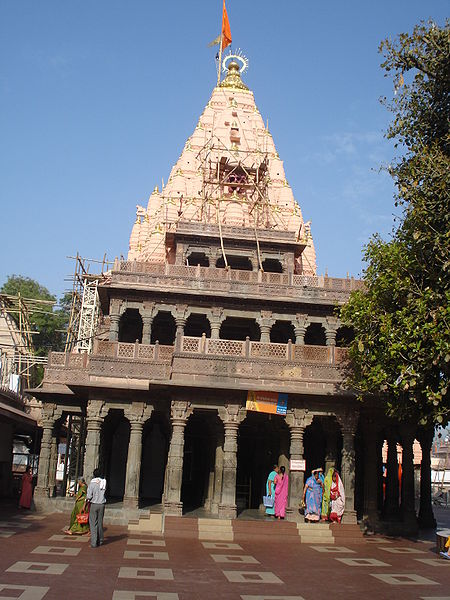
The Mahakaleshwar Temple in Ujjain represents one of the 2 Jyotirlinga shrines located in highly, energetic, magnetic, royal fire sign Leo the sign of the Sun the giver of life. There are several aspects of the Mahakaleshwar Shrine to be examined which could relate the site to the astrological significance of fire sign Leo.
First of all: different from all other Jyotirlinga Shrines in the Mahakaleshwar temple the worshiped “face” of the lingam is facing south the direction of the Sun and therefore of Leo.
Secondly: the Mahakaleshwar Temple is a Jyotirlinga (male) and Shaktipeetha (female) at the same time. Astrogeographically the combination of this duality is reflected in the position in female sign Cancer the sign of the moon and motherhood plus in male fire sign Leo the sign of the sun and light, power stations and the heart. Mahakaleshwar Temple combines two consecutive stages within the zodiac. The hierarchy of these two signs reflects Cancer as the stage of conception, pregnancy, the uterus and Leo as the stage of birth and entering into life. Places that combine these two topics resonate with aspects that are beyond the limitations of gender duality an aspect that supports a supra-regional resonance and influence of such places.
Rameshwaram: Aries as the sign of erection, towers and mobilization
Male phallic sign fire sign Aries the sign of erection could of course be seen as the natural astrological equivalent of a lingam at least in regard to it`s most basic element of form. But the astrogeographical analysis reveals that this does not mean that sites in Aries attract masses of people nor that they are symptomatic of the really important places of worship of Lord Shiva. This means that astrogeographical data from my field study could well be seen in relationship to the conclusion made by Swami Sivananda who expressed that “the view that the Shiva lingam represents the phallus is a mistake.” (Sivananda, Swami (1996). “Worship of Siva Linga”. Lord Siva and His Worship. The Divine Life Trust Society.)
Nevertheless Aries plays an important role for temple sites just like any of the other 11 astrological structural elements. Aries stands for sites of warfare used for prayer and worship before going to war, worship of the aspects of a god as a protector during warfare, giver of strength, motivation, decisiveness, clear attitudes and victory. Aries stand for the gathering place of armies or warriors before the start of a war and also the sites of important oracles that were consulted before beginning a war. Compare: (The oracle of Delphi in Aries with Libra, The Bighorn Medicine Wheel in Capricorn and Aries). And the legend of the only Jyotirlinga in Aries the Ramanathaswamy shrine in Rameshwaram is in fact a site directly related to a war. During the war of Rama the seventh incarnation of god Vishnu against the demon king Ravana Rama`s army built a bridge from Rameshwaram to the island of Sri Lanka to prepare the attack on the empire of the demon king. Rameshwaram thus represented the site of the gathering of Rama`s armies and the starting point of the attack on Sri Lanka.

In the legend of the Jyiotirlinga itself it is explained that Rama, prayed to Shiva at this site to absolve the sin of killing a brahmin (representative of the highest caste in Hindu religion). This is beacause Ravana the demon king was also a brahmin. Rama wanted to have the largest lingam and instructed his friend Hanuman to bring the lingam from Himalayas. Since it took longer to bring the lingam, Sita, the wife of Rama, built a small lingam out of the sand of the nearby sea shore, which is believed to be the lingam in the sanctum. Hanuman`s íntense astrogeographical resonance with the sign of Aries is reflected by the astrogeographical position of the site of the Hanuman Swami statue in Paritala, Andhra Pradesh in Aries.
No Jyotirlingams in female air sign Libra
The fact that none of the 12 major Jyotirlinga are located in service orientated female air sign Libra the sign of harmony, balance, beauty, angels, relationship, love and beauty could lead to various different conclusions.
My first consideration here is that the missing of a Jyotirlinga in Libra can of course be explained as an indication that Libra simply does not fully support the presence of a lingam at a place. This would be because Libra represents the female counterpart, momentum of differentiation and focus on polarity of the one-dimensional aspect of Aries the sign of unicellular structures, undividedness, mono causal thinking and male or phallic forms such as towers of light (lingams). As an air sign Libra may be examined as the structural astrological element that lacks the reflex and urge for centralism and concentration of energy on one single center and therefore rather have a centrifugal than a centripetal effect. For the issue of polarity between centrifugal and centripetal signs compare my article Lying or Flying – The Controversy between Taurus and Aquarius at the leaning tower of Pisa:

Scorpio and Shiva´s role as the purifier of the milk ocean
Water sign Scorpio which in classical Hindu astrology is the sign of intoxication, alchemy, death and of demonic quality (tamoguna) only appears once on the list of the Jyotirlinga. This indicates that bourgeois astrological classifications and understandings of Shiva which relate him to Scorpio the sign of demons, nomads, trauma and fortresses are not the central topics of the worship of Shiva at the sites of the Jyotirlinga shrines.
Therefore one of the questions brought up by the implications of astrogeographical data here could be: in how far is the classification of the astrological signs through the 3 gunas which tend to ban Shiva and the signs of Scorpio (human perception, the underworld), Capricorn (effective reality, exorcism) and Aquarius (sky, paradise, self-finding, castelessness) into the realms of Tamo-Guna and ignorance while relating Sagittarius (darkness, material growth and success) and Pisces (hidden action) to the realms of purity (Sattva Guna) in regard to human behavior and character..
The reflexes of the logic of ignorance can be studied in the following video where the astrology teacher himself enjoys the tamoguna perspective while explaining the tamoguna version of definitions. Saturn the planet of the preservation of dharma is described as a natural indicator of fear although fear from dharma is a mark of fear of one´s hidden guilt and as such the clearest trait of ignorance.
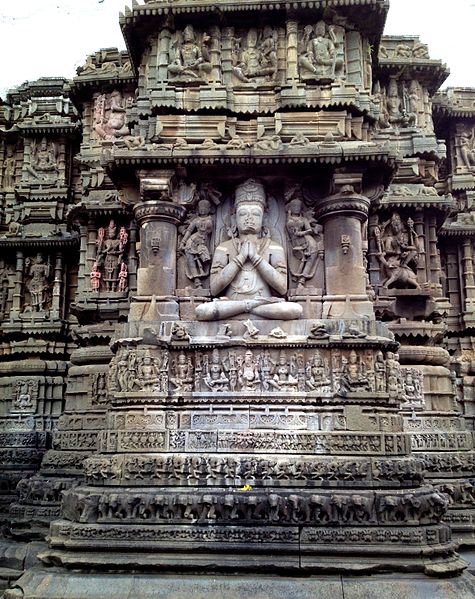
The first temple at Aundha Nagnath is said to have been constructed by King Yudhishthira the eldest of five Pandava brothers during their 14 years of exile from Hastinapur. Aundha Nagnath is the eighth of the twelve Jyotirlingas. In astrological numerology the classification as the eighth shrine relates the temple to the eighth astrological sign Scorpio. The present temple is supposed to have been built during the 13th century.
In regard to the deeper psychological understanding of the role of Scorpio important clues to it are reflected in a legend about how the Maharashtran poet saint Namdev found his guru and master at the Jyotirlinga shrine of Aundha Nagnath. In modern German astrology Scorpio is seen as the sign of visual mental perception: the capacity of the human brain to visualize perception and store the image of the perceived objects along with the memories from the other sensual organs in order to create a multidimensional image of the moments in time that we experience. Therefore Scorpio has a natural tendency to judge perceived things by the already existing given standards of perceived and stored mental knowledge and patterns of habitual role conduct and morality. Learning by watching, copying the example of one´s teachers and gurus and adapting to a given hierarchy is therefore typical for Scorpio`s approach to learning. Therefore Scorpio depends on questioning and examining the abstract parameters of the conditions of perceived objects by investigating the corruption of the presented examples, teachings and moral codes.
Following this understanding of the reflexes active in Scorpio what Namdev was taught during his visit to Aundha Nagnath was an intense lesson about outwardly and superficial judgement in relation to the deeper knowledge and understanding of the spiritual plane.
From my astrogeographical field study I have concluded and calculated that the combination of Scorpio with Cancer seems to represent the archetypal astrological sign constellation – as the source of River Ganga as well as the Devprayag of Alekhnanda and Baghirati, the City of Varanasi, the birth place of Mahavatar Babaji, Lok Sabha and even the largest Shiva statue are located in that sign combination.
Namdev at Aundha Nagnath Temple
Namdev was adviced to visit Aundha Nagnath Temple by a saint named Jñāneśvar to find a proper guru. When he first entered the temple he found Visoba Khechara resting with his feet on the lingam, the symbol of Shiva. In Hindu culture as in most other religions such a behavior is seen as a severe disrespect to a holy shrine and an insult to the temple deity. Seeing this Namdev reproached Visoba for having insulted Shiva. Visoba asked Namdev to take his feet and place them elsewhere and wherever Namdev placed Visoba’s feet a lingam sprang up from the ground. Thus, through his yogic powers, Visoba filled the whole temple with Shiva-lingams giving Namdev an example (darshan) of the omnipresence of god.
Another story related to the negativity and falsity of formal judgement, morality and regulations in regard to the Aundha Nagnath records the following incident: one day Namdev was singing spiritual songs in front of the temple. One of the brahmins working as temple keepers came out and told him to go away because he would be disturbing the worship at the temple. So Namdev went away from the front of the temple to a place on the side of it where he himself felt undisturbed and started singing his spiritual songs. But as the temple god wanted to listen to Namadev`s singing he decided to lift the whole temple and turned it around. This story relates to the transformational powers of Scorpio which lie in the intense focus on the perceived reality. From the wiki article: “It is testimonial to that miracle why Nandi (Shiva`s guardian bull which is usually placed in front of the temple) is located on back side of temple.”
Ghrishneshwar Jyotir Linga in Capricorn
Capricorn the sign of asceticism (tapasya), living in solitude and also the sign of mountains is a comparatively expectable resonator for Shiva because he is supposed to spend his time in meditation on the highest mountains. As a main factor for grounding the spiritual world on the plane of the material world, stability of social institutions and thus of religion and dharma, the preservation of traditions and simply the state cult that accompanies the stable rule over society Capricorn is also a natural indicator for the resonance of supra-regional matters at places.
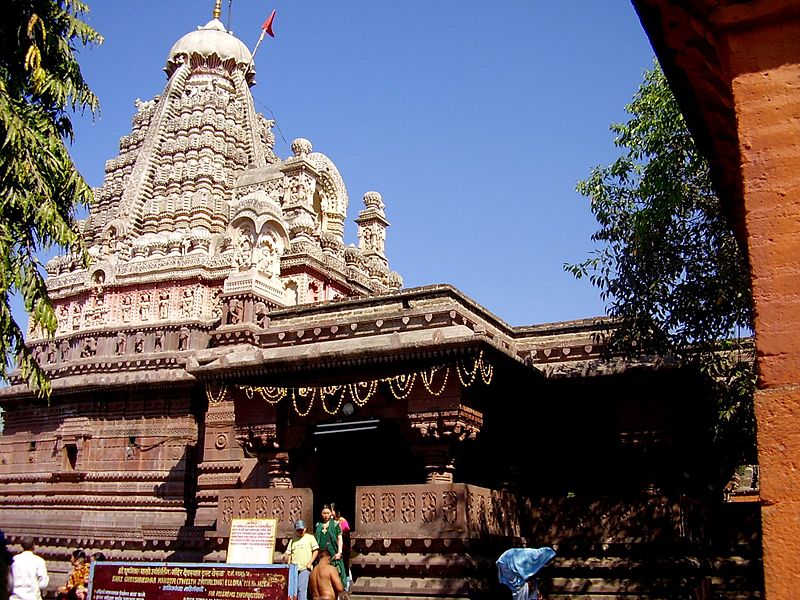
The shrine of the Grishneshwar Jyiotirlinga located near the famous Ellora Cave Temples has both astrogeographical coordinates in earth sign Capricorn. Therefore the legend about how and why the Grishneshwar Jyiotirlinga was installed in the place can serve as an archetypal allegory of that sign.
It is a story about complete trust in the laws of the eternal manifestations of god and surrendering one`s own personal views, fears and limitations to the plane of divine knowledge and the service to god, one´s duties, obligations and the laws of fate, dharma, physics and higher knowledge:
The legend talks about a childless wife named Sudeha who in order to have a baby decided to marry her younger sister named Ghushma to her husband named Sudharma, all three of them of the Brahmin (priest) caste. Sudeha advised her sister to make 101 lingas, worship them and place them in a nearby lake. That way with the blessings of Lord Shiva, Ghushma gave birth to a baby boy. One night out of jeaulousy Sudeha killed her sister`s son and threw him in the lake. Next morning, Ghushmas and Sudharm got involved in their daily prayers and worship. Sudeha too started her worship. Yet another family member Ghushma’s daughter-in-law found blood stains on bed and found parts of the dead body. horrified she ran to Ghushma and Sudharma to inform them of the murder but they did not react but stayed absorbed in their meditation. Even later when coming home and seeing the blood Ghushma wasn`t moved at all by the finding and declared that Shiva who had created her son would protect him and so started reciting the name of Shiva. Later she saw her son appearing again. Seeing her son Ghushma was neither happy nor sad, a trace of complete surrender to the knowledge of the divine and the higher laws of fate Shiva appeared before her highly pleased by her devotion. Ghushma asked Lord Shiva to forgive her sister Sudeha and free her. Pleased with her purity, Lord Shiva granted her another boon. Ghushma asked Shiva to reside at the lake eternally for the benefit of humans in form of a Jyotirlinga and “may you be known by my name”. On her request Shiva manifested himself in the form of a Jyotirlinga assumed the name and form of Ghushmeshwar (or Grishneshwar).
Malikarjuna Swami and the combination of Capricorn with Aquarius
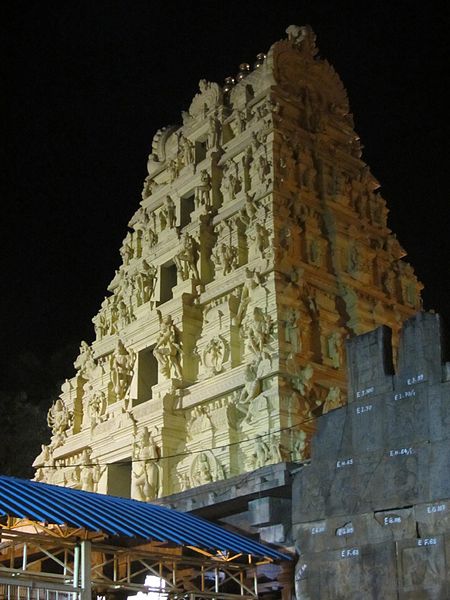
The Jyotirlinga Shrine of Malikarjuna Swami at Srisailam in Andhra Pradesh is located right in between earth sign Capricorn and air sign Aquarius. The second coordinate here lies in water sign Cancer (motherhood, fertility, pregnancy, conception, water sources, uterus, emotional identity and individuality).
The position in between earth sign Capricorn the sign of mountains and air sign Aquarius the sign of the sky and heaven stands for the realms where the highest places on earth meet with the sky above. Places within +/- 5° near the astrogeographical position of 30°Capricorn/0° Aquarius (degree of the world government) relate to that topic and are of particular importance for fulfillment of ascetic practices in regard to individuals and for the world government in regard to humanity.
Tryambakeshwar Shiva Temple in Leo with Capricorn
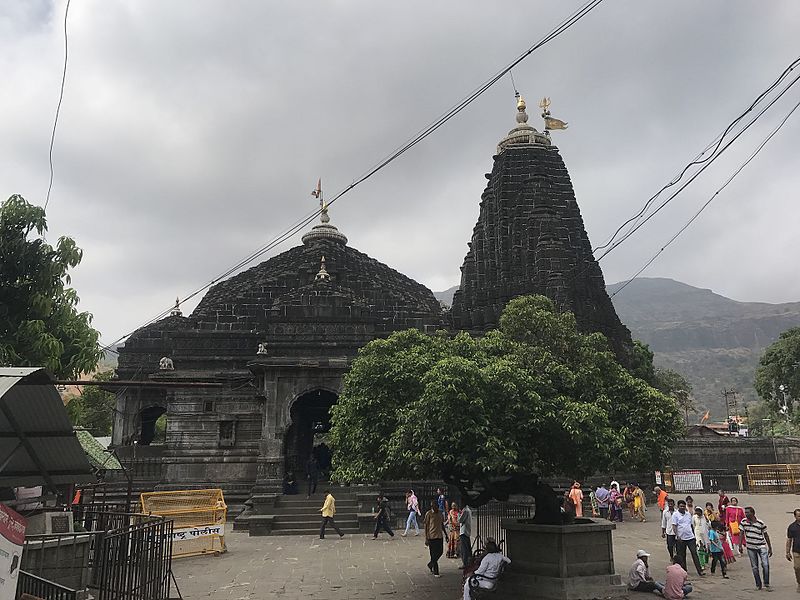
While all other shiva lingas symbolize Shiva alone the extraordinary feature of the Tryambakeshwar Shiva Jyotirlinga at Trimbak, Maharastra is that it has 3 small lingams for the trinity of Shiva, Brahma and Vishnu.
The current temple structure was built from basalt rock in the middle of the 18th century by the Prime Minister of the Maratha Empire Balajirao Bhat. Near the temple is the source of Godavari – the 2nd longest river in India.
A famous 89 carat diamond of Indian origin known as the legendary Nassak Diamond was the eye of the lingam until it was stolen for the British East India Company during the British conquest of Maharastra in 1817/18.
The site of the Tryambakeshwar Jyotirlinga Temple is located in the combination of solid, conservative earth sign Capricorn sign of mountains, rock,stability, state cult, government, history, tradition with royal fire sign Leo the sign of the sun light, heart, power stations.
The 2 versions of Bhimashankar Jyotirlinga Temples in Maharashtra and Assam
I cannot solve the dispute whether the Bhimashankar temple north of Pune in Maharastra or one of the two proposed sites in Assam should be considered as the actual “true” Jyotirlinga.
But what I can do is describe the locations:
Aquarius the sign of self-finding
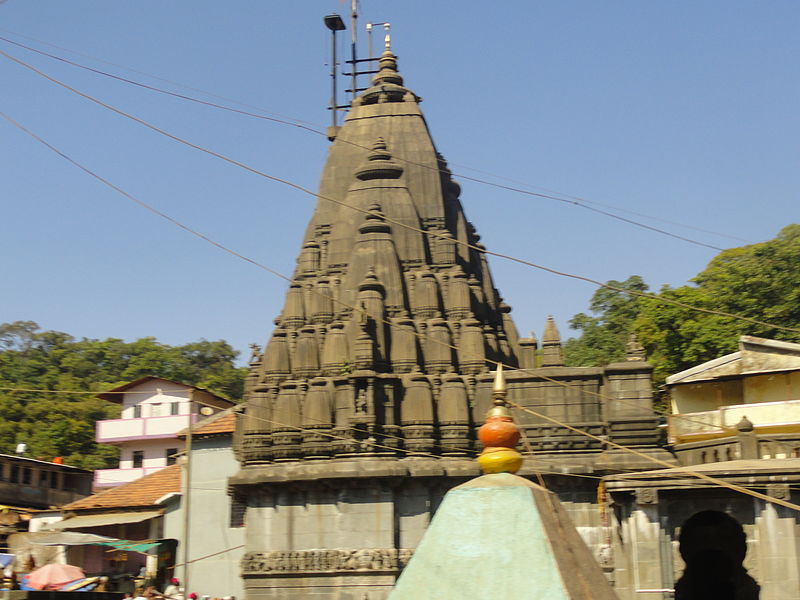
Spiritual air sign Aquarius which together with Scorpio represents the most important astrological resonator for outcasts such as Shiva at least appears 2 times on the list of the Jyotirlinga.
Aquarius reflects Shiva`s attitude of seeking purification, simplicity, abstraction and a holistic view on life, leading a life without luxury, self-finding and self-liberation and leaving society behind. Aquarius stands for the non-dualistic, spiritual or anti-materialistic point of view. In relation to any caste system it stands for castelessness and as such for the Sannyasis and Saddhus.
The Bhimashankar Temple is named after the asura Bheema a son of the giant demon Kumbhakarna. Shiva is said to have destroyed the demon Bhima at the temple site because Bhima had attacked and defeated one of Shivas devotees at the Jyotirlinga.
Sri Bhimeswar Dwadas Jyotirlinga Panchadhara Shiva Dham at Pamohi, Dakini Hills, Guwahati, Assam
For a closer description see this article from brahmonsobha.blogspot.com : “The Shiva Purana and the Koti Rudra Samhita refer to Bhimashankar Jyotirlingam in Dakini. Daini Bama at Pamohi is interpreted by the devotees to be one of the Dwadas Jyotirlinga. It is said that Lord Shiva destroyed the demon Bhima here when he was about to strike the Lingam with a sword. The Lingam was worshipped by His devotee Kamarupeshwar {Priyadharma was the king of Kamrupa- Shiva Puran Astam Khanda 28-31 Adyaya (Hindi & Bengali- Durga Pustak Bhandar, Allahabad)} who was imprisoned by Bhima. Bhima, the son of Kumbhakarna and Karkati did severe penance and became very powerful by a boon of Sri Brahma. The sweat from his body forms the river. On the request of his devotees Sri Shiva stayed there as the Bhimashankar Jyotirlingam.”
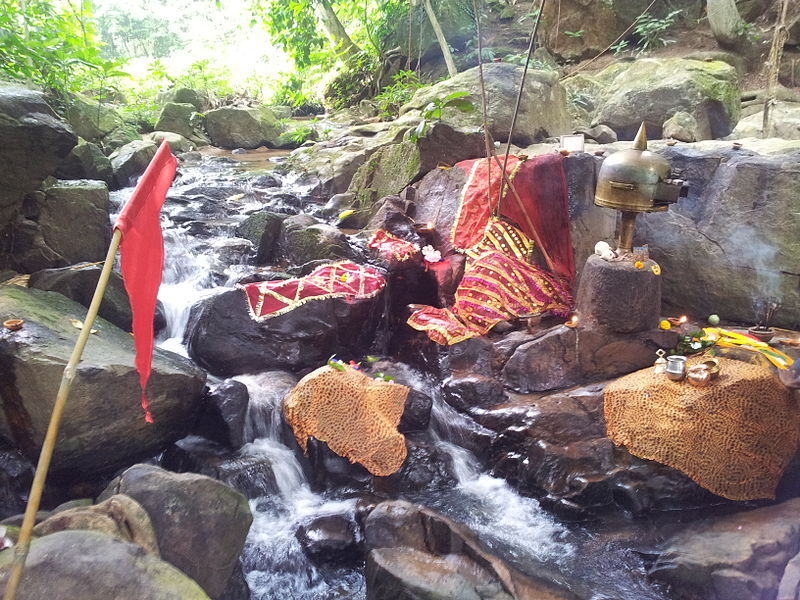
Bhimeswar Dwadas Jyotirlinga Dham is located at Dakini hill near Pamohi in Guwahati, Assam. It is located inside of the river bed in the combination of highly defensive, solid fixed water sign Scorpio sign of the underworld, demons, death, trauma, pain, outcasts and dynamic fire sign Sagittarius sign of understanding, success, shamanism, healing, initiations, the priest caste. luxury, fire sacrifice, cleansing fires and hell.
Vaidyanath Temple: Virgo and Shiva as a doctor and healer

One of the 2 Jyotirlinga shrines located in Virgo the sign of health, yoga culture, healing and doctors is Vaidyanath Temple in the City of Deoghar in Jharkhand. The second coordinate of the Vaidyanath Shrine lies in Virgo`s opposite sign: spiritual water sign Pisces the sign of imagination, fairy tales, music, mystification, the dream world, the common unconscious and invisible, spirituality, the subtle plain as such, communion with the divine and the most important astrological indicator for temples.
The legend of the origin of the Vaidiyanath Jyotirlinga shrine claims that the demon king Ravana cut of and offered his ten heads one after another in sacrifice here to worship Shiva forcing him to descend and heal Ravana`s wounds. As Shiva acted as a doctor (healer) he is referred to as Vaidhya (“doctor”) at the Vaidhyanath Shrine.
The opposition and conflicting attitudes between Virgo (strategical planning, individual needs) and Pisces (long-term effective spiritual reality, compassion) can be investigated here through the example of an intentional action dedicated at forcing god to interact with a human according to his own will and needs.
Gemini and Virgo at Kashi Vishwanath Temple
Kashi Vishvanath Temple in Varanasi is dedicated to Shiva Vishvanatha or Vishveshvara the Ruler of The Universe.The Temple has been referred to in Hindu Scriptures for a very long time and as a central part of worship in the Shaiva philosophy. It has been destroyed and re-constructed a number of times in history. The last structure had been destroyed by Mughal emperor Aurangzeb, who constructed the Gyanvapi Mosque (located in Virgo with Taurus) on its site in 1644.
The current structure was built in 1780 at a an adjacent site by Maratha Empire Queen Ahilya Bai Holkar who was on born 31 May 1725. In Ahilya Bai´s birth chart a conjunction of Sun (identity) and Venus (possession of territory) with Neptune (essence, spirituality) as a constellation of nomadic preference (essence over territory) in Gemini and right conjunct the new temple site explains the motives of her motherhood of the current structure.
Ahilya Bai was the great pioneer and re-builder of hundreds of Hindu temples and Dharmashalas throughout India including some of the most sacred sites of Hindu pilgrimage that had been demolished during the traumatic “reign of religious terror” under Mughal Emperor Aurangzeb.
Aurangzeb was born on 3 Nov 1618 (source: B.V. Rao) with Pluto (ideology, hierarchy foreign territory), at 10° in Taurus (wealth, income, food, possession of territory) as indicator of the “zeitgeist” of the era exactly conjunct the center of the former temple site at todays Gyanvapi Mosque.
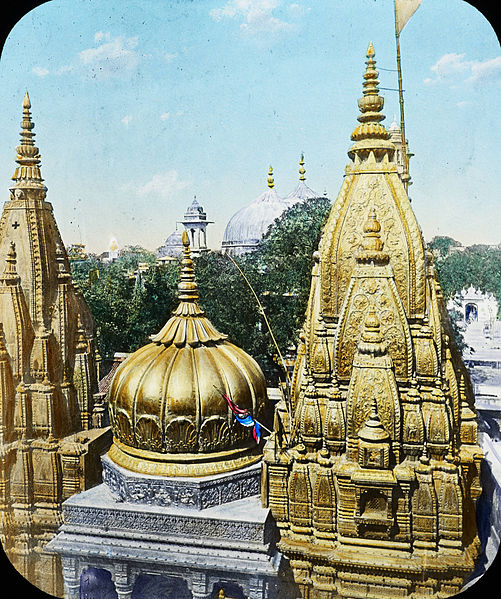
Today`s temple is not located on its original position. This could explain the – for the site of an important place of worship of Shiva – relatively unexpected and not easily explainable astrogeographical constellation of its construction site.
The combination of the two “Mercury signs” earth sign Virgo sign of yoga culture, healing, self cleaning, plants and of protection of nature and air sign Gemini the sign of sign posts, learning, road crossings, communication brings together the two major indicators for spiritual entities of plants, often marking the topic of a place of the protection of nature. Especially movable air sign Gemini is to be seen as an indication of the provisional, temporary character of the position of the temple building on this site. Anyway Gemini`s quality as the sign of neutrality and a technical mental approach to thinking does not provide a highly supportive energetical stimulation for temples.
The original place of Kashi Vishwanath where the Gyanvapi Mosque is located since 1644 is located in the combination of Virgo with earth sign Taurus sign of the earth, grounding, market places, local energetic centers and an indication for the importance of the site as a place of resonance of feeling as the ruler of the land and territory. Comparable sites where Muslim temples were built on the sites of former central religious sites in Taurus are the Hagia Sophia in Istanbul and the Temple Mount in Jerusalem. It has to be noted that Taurus does not stand for spirituality itself as the purpose of a temple and is no indicator that the reconnection with the divine is the aim of a temple built in Taurus in the first place. The reason why usurpers want to install their temples in Taurus is to overwrite central important places of the culture of the invaded country by occupying a place of resonance of the local landlords and of local self-centeredness.
But of course temples in Taurus can serve an important purpose in regard to local deities, deities of the earth like for example the earth mother, fertility rites, rites and prayer for wealth, temples vor Venus and other important purposes.
The site of today`s Somnath Temple in Taurus with Sagittarius
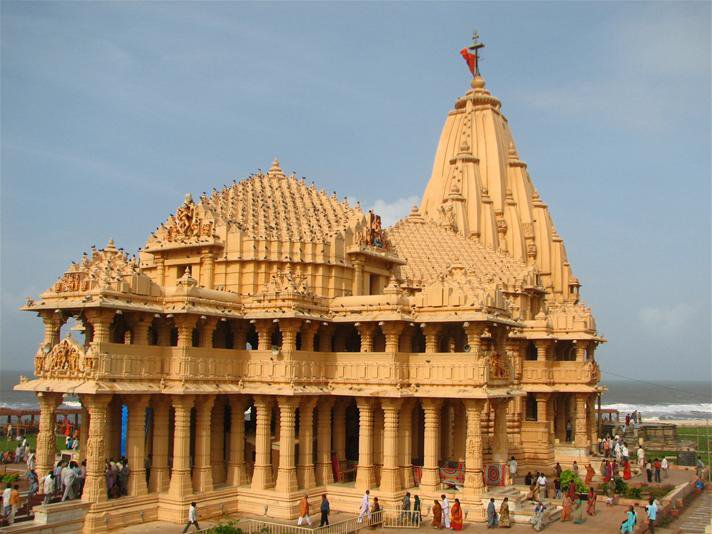
Todays Somnath Jyotirlinga shrine in Gujarat and the famous temple are not located on the exact site of the original position but adjacent of it. It`s astrogeographical coordinates fall in the combination of highly profitable earth sign Taurus sign of the earth, grounding, roots, agriculture, food, wealth, income, possession of land, local energetical centers and market places together with dynamic fire sign Sagittarius the sign of expansion, victory, success, luxury, growth, the Brahmin castes, shamanism, initiation, thinking, time-measurement and a major indicator for knowledge about ritualism. The combination of Taurus as the sign of wealth with Sagittarius as the stimulation for growth and expansion stands for a site particularly stimulative for material success and growing wealth. This could be a reason why the long and rich history of the Somnath Temple recorded since the 7th century accounts such a long series of plundering, destruction and reconstruction of the temple.

Here is a legend about the origin of the Somnath Jyiotirlinga from the Skanda Purana:
The Moon (Chandra) was married to the 27 daughters of Daksha Prajapati. In astrology they are known as the 27 stations of the Moon or Nakshatras. But Chandra developed a special love to Rohini whose position in the “Hindu” (sidereal) zodiac ranges from 10°-23°20 Taurus. Because Chandra started to neglect his other wives their father Prajapati Daksha cursed Chandra that he would lose his beauty and radiance. As the Moon lost his beauty and radiance the entire world became lifeless. Worried about this Chandra came down from the sky with Rohini and worshiped the Sparsa Linga of Somnath until he was blessed by Shiva to grow and shine in the bright half. Because the moon regained his light at this place this town came to be known as Prabhasa. Brahma paved way for the construction of the temple and Chandra and other gods prayed top Shiva to assumed the name and form of the Somchandra Jyotirlinga (named after the moon god Soma) to reside there eternally. Another important role of Somnath it is considered the place (Prabhas Kshetra) where Shri Krishna is supposed to have left his mortal body.
The controversy of the Nageshvar Jyotirlinga
The actual location of the legendary forest of Darukavana where the Nageshvara Jyotirlinga is located is subject to a debate among scholars but also among the tourism industries. There are two places which are commonly named as possible authentic sites of the Nageshvara Jyotirlinga: the Yageshvara Temples at Almora, U.P. and the Nageshvara Tempel near Dwarka, Gujarat.
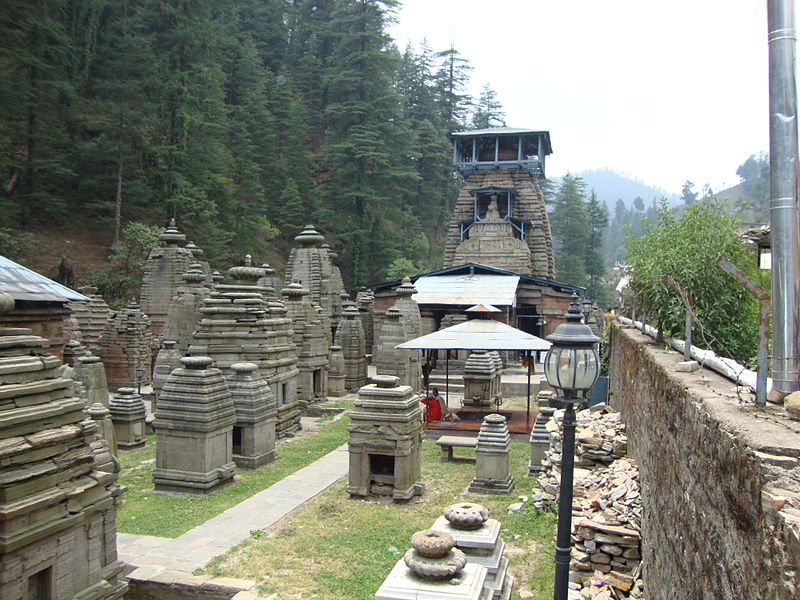
The Jageshvar temples are a large group of temples built between the 7th and 12th centuries. The astrogeographical resonance coordinates of the site combine the two signs of long-lastingness Capricorn and Scorpio. This sign combination is also present at the site of the oldest known extant temples on our planet: the 12000 year old round temples of Göbekli Tepe. Conservative earth sign Capricorn stands for the topic of a site dedicated to a state cult, traditions, stabilization of culture, royal dynasties and social hierarchy. Scorpio stands for the stone-masonry skills, construction and art work, sculpting, imaging and also the resonance of places with energetical topics related to Lord Shiva.
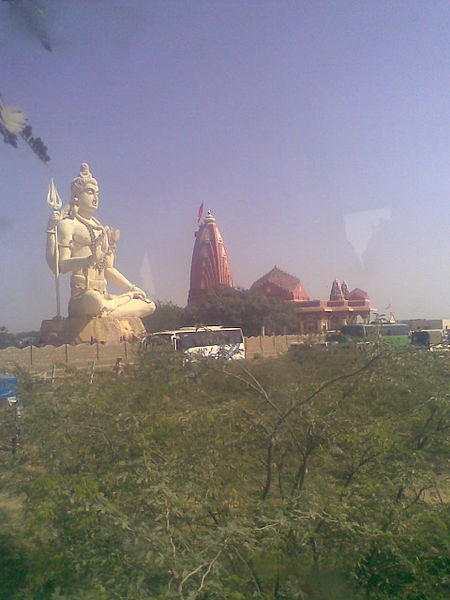
ph: Aditya Mahar, ccbysa3.0
Nageshwar Jyotirling near Dwarka is located the combination of earth sign Virgo the sign of reason, health, medicine, healing, yoga culture, celibacy, monk culture, brahmacharya and indicator for a place of healing. The 2nd coordinate is in creative, innovative air sign Aquarius sign of the sky, heaven, flying, paradise, self-finding, illumination.